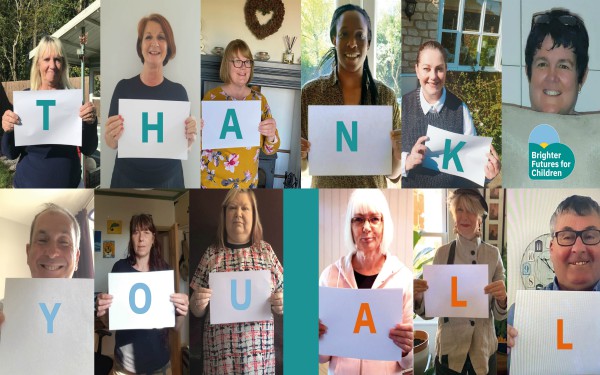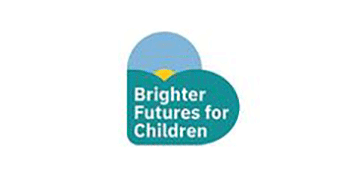“The change in the culture and in the sense of us being a team, working together to change things for the better is palpable. It’s what motivates me every day.”
This is Tony Kildare, managing director of Reading-based Brighter Futures for Children, talking about staff at the not-for-profit company which was set up in December 2018 to turn around the borough’s then ‘inadequate’ children’s services.
The last few months have been a true test of that teamwork. Undeterred by the fast pace needed to completely redesign their working practices, the company’s staff were organised into three equally-skilled teams – purple, blue and green – as an early adopter of social distancing, ensuring that only one ‘colour’ at a time was in the office and the other two were working from home.
“We did this before the lockdown began, so we were ready and able to take on the huge challenges that Covid-19 has put our way,” explains Tony. “It’s taken a Herculean effort on everyone’s part but it’s meant that we’ve safeguarded each other, as well as ensuring that we’re still here to do what we’re here for – protecting vulnerable children, young people and their families. Even if some staff on these rotas fall ill themselves, others in their colour team are able to step in to reduce the risk of cross infection,” he adds.
Improvement story
This kind of quick-thinking, whole-company approach has been the hallmark of the success of Brighter Futures for Children. The first step on this improvement journey was achieved in October last year when it secured an improved ‘requires improvement’ rating from Ofsted, with inspectors citing the positive results emerging across most areas of practice from a renewed focus on improving the quality of social work.
It was echoed in March this year when the company’s independent fostering agency was rated ‘requires improvement’ in its first inspection, improving on the ‘inadequate’ rating fostering services had received, alongside the rest of children’s services, under Reading Borough Council. Alongside this, both children’s homes run by the company have been rated as ‘outstanding’, so the improvements are clear to see across the piece.
Meanwhile, despite recruitment and retention remaining as big challenges, the number of vacancies among case-holding social workers has fallen by 70% in the past 12 months. Turnover is running at 12%, down from 22% under Reading Borough Council in September 2018, while agency practitioner numbers are decreasing and remaining locums are providing a degree of stability as they have a tenure of 12 months.
So, what has made the difference and what has been difference for staff from being employees of Reading Borough Council to joining Brighter Futures for Children?
Nurturing staff
“When you create a company you also create a different feeling; instead of a being part of a great big council, you are part of a smaller family,” says Deborah Glassbrook, director of children’s services for Brighter Futures for Children. While Tony runs the company and is responsible for delivering the business plan, Deborah run the operational side of children’s social care, early help and education services.
“One of the advantages from being in a smaller organisation is being able to help staff feel more valued, cared for and nurtured,” says Deborah, who took up her post in November 2019, after previously supporting Brighter Futures for Children’s improvement on secondment from fellow not-for-profit provider Achieving for Children.
“Social workers can go into social work in 152 places but it’s about how it feels to be part of the team here,” she says. “What we are looking for is a shift in the culture so we are doing things with our staff not to them – role modelling how we want them to work with children and families.”
One part of this is reducing caseloads, something which Ofsted reported in its inspection last year, saying practitioners described workloads as “manageable”. However, the company is going further still and reducing maximum caseloads to 18-20.
Critical to this is investing in early intervention, building on an early help service which inspectors described as a “real strength in Reading”, to enable more children to be supported safely in their families, giving social workers more time to spend with those children and families requiring statutory intervention.
The company’s year two business plan describes the shift of balance from children’s social care to early help, with greater community involvement, so that fewer cases reach the statutory threshold, leaving social workers more able to use the key skills they trained and went into social care for.
Promoting flexible working
Another dimension of this nurturing approach is the company’s support for flexible working, enshrined in its business plan, published in March 2020. This refers to plans to examine “new IT and digitalisation of our service, to improve our staff’s ability to work in an agile and flexible way, which meets both the demands of their work and their work/life balance”.
Staff are already feeling the benefits.
Social worker Scott says: “They encourage flexible working, so one thing I’ve found beneficial is being able to start at a time that suits me and being able to stop a little bit earlier if I need to for my own personal commitments.
“As long as I’m getting the work done and I’m supporting families and children and doing what needs to be done within my role my manager is more than happy to be flexible with my work pattern.”
This is a crucial aspect of everyone’s new working arrangements, now with homeworking the norm and trips into the office – on their purple, blue or green rotation weeks, -limited and not encouraged unless absolutely necessary.
Innovation in response to Covid-19
Alongside new ways of interacting with each other, through the use of Teams, WhatsApp and other digital channels (there’s been a steep learning curve and lots of easy-to-read guides issued recently) there have been innovative ways of meeting with and talking to children, young people, parents and carers.
“We’ve had to adapt ourselves under Covid-19 but never lose sight of the fact that the vulnerable can so easily slip under the radar,’ explains Tony, “so decisions were taken very early on to red/amber/green-rate all our cases, so we know that the children and young people who are most vulnerable are within our sights and that channels of communication with them are open.
“We’ve adapted our offer across the board. Our website now has information, fun and learning activities as well as a broad section on wellbeing and coping mechanisms and the pages have had more than 2,000 new views in less than a week.
“The same goes for social media – we’ve had to reach out to our service users and to vulnerable families on the edge of care in ways we might not have otherwise used. It seems to be working.”
Quick-thinking
Deborah adds that being part of an alternative delivery model to council children’s services enables this greater creativity and flexibility of practice.
“Though always working within the guidelines and statutes we can be creative and respond quickly,’ she adds.
This is echoed by Scott, who says: “I’ve noticed that when you come up with a solution to a difficulty you’ve had in practice, things are quickly resolved, things are put into place so you can go out and start working with families and children quite quickly.
“Say it’s an issue of needing to put a support service in place for a child and family and we need funding for that, the processes are quite quick to get that funding and get that support put in place sooner for children and families, which ultimately makes our work more effective.”
And the teamwork doesn’t stop at looking after service users. The company finds time to have fun with staff too. “Last Christmas was a classic example,” explains Tony. “Every team was given the chance to decorate their workspace. The competitive spirit – all good-natured, of course – went into overdrive and the Christmas scenes were a real sight to behold.
“And now we’re having virtual coffee mornings, with teams competing in different ways, from ‘silly hat Thursdays’ to ‘screen’ holiday backdrops. We’re injecting fun into work and we’re working as a united team. It’s what makes us a family team.
“Pulling together is what we do and being part of this improvement journey, surrounded by all these incredible people is what inspires us all to be here every day.”




 Facebook
Facebook X
X LinkedIn
LinkedIn Instagram
Instagram